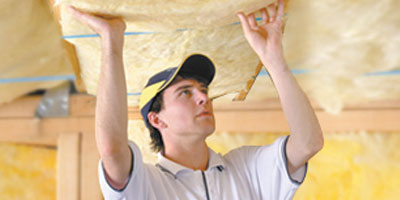CSR studies the threat of condensation to Australian homes

CSR studies the threat of condensation to Australian homes
12 June, 2013
Australian building products company, CSR, is calling for an increased focus on condensation management in Australian homes, saying it has largely been overlooked as a critical building science issue.
According to CSR, while condensation damage affects thousands of homes and apartment blocks each year, the problem often goes un-noticed by home owners until expensive repairs are required.
The company says that even before visual damage occurs, conditions are often conducive to mould and rot occurring.
To bring the issue to the forefront, CSR has undertaken scientific modelling to shine more light on condensation and how it can be managed through building design and renovation projects for existing residences.
CSR building scientist, Jesse Clarke, has been leading the research efforts at CSR to help better inform the design of both new builds and renovation projects. His scientific modelling was based on an average Australian residential building with a 150m2 exposed roof surface and 150m3 of roof volume.
Using software analysis, the properties of the roof space were evaluated against the weather patterns for an entire year in Australia’s major cities by using weather data from the Chartered Institute of Building Services Engineers. The simulation was conducted using different roofing materials and design traits.
The initial results revealed that higher levels of condensation were occurring in homes with lower levels of ventilation. Clarke explains the data confirms that the majority of Australian homes have inadequate measures in place to manage moisture and condensation build-up in the roof space and other cavities.
“The presence of moisture in the home is inevitable. In addition to weather fluctuations, it can be caused by a number of general household activities including cooking and showers, and output from electrical appliances such as air-conditioners and heaters. The critical issue here is how to manage the moisture before it turns into damaging condensation, or leads to structural deterioration” he said.
While condensation can have a significant impact on a home and the health of its occupants for starters, Jesse explains there are also wider ramifications for all in the building industry.
“In some cases, condensation damage has occurred in buildings less than two years old and builders have been held liable to repair the home or apartment building, costing thousands of dollars and raising potential for legal claims. It is clear that we need to re-evaluate our approach to this issue on an industry-wide scale,” he said.
The CSR advises there are two main approaches – roof/ceiling space ventilation and the installation of insulative treatment under roof cladding.
“Our research showed a sharp decrease in condensation in the roof cavity when adequate ventilation systems are installed, as they increase the drying rate of the air within the cavity. Secondly, the application of insulation under the cladding increases the surface temperature of the underside of the cold roof at night time, reducing the amount of condensation occurring,” Jesse said.
“The interactions between building materials and moisture are very complex, with different rates of condensation depending on roof gradient, size and the properties of the materials used. Adequate research and knowledge will be integral to the building design and renovation process to ensure condensation doesn’t continue to grow as a significant issue in Australian homes,” he said.
Fore more Architecture & Design articles click here.



